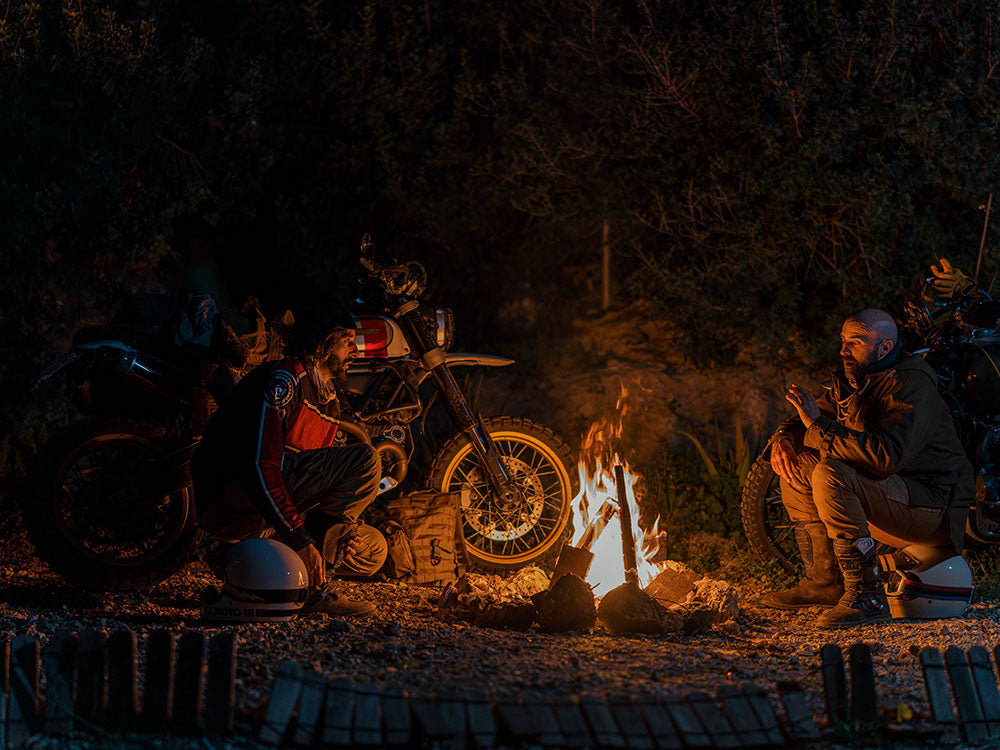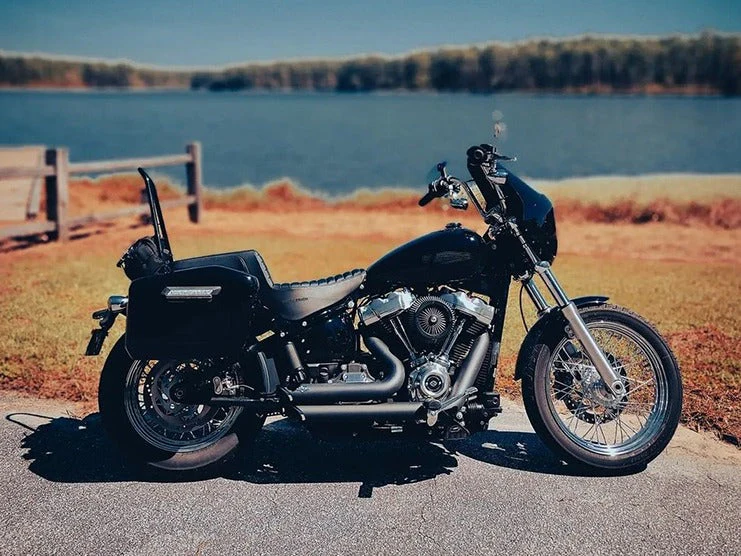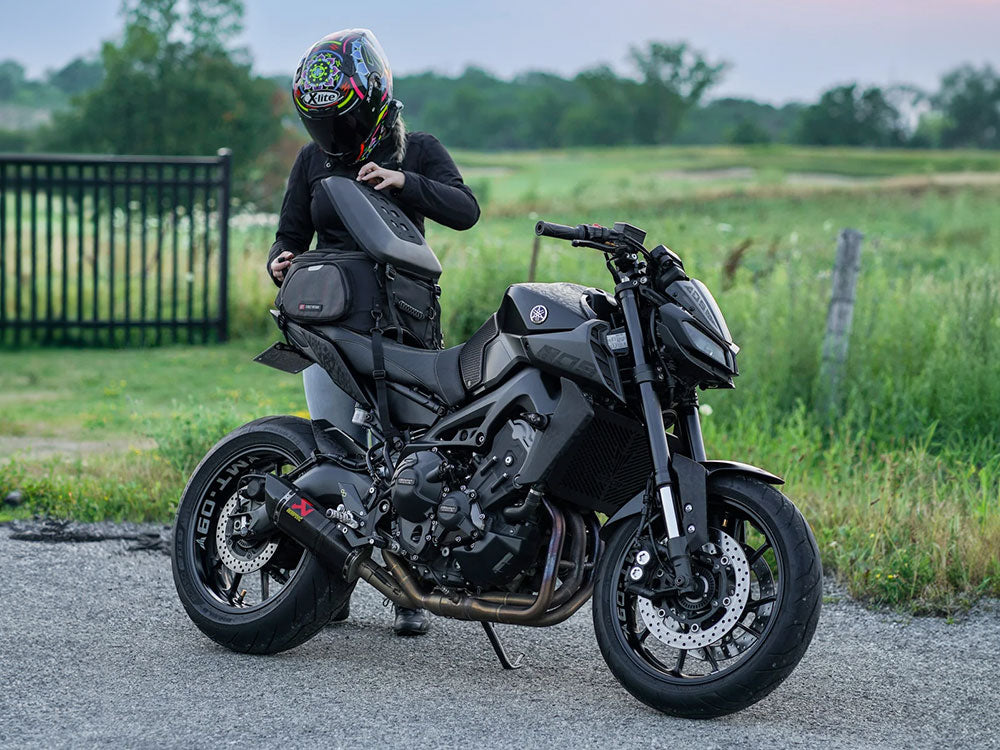Many motorcyclists enjoy the joys and benefits of motorcycle camping. However, they have to undergo the challenge of packing camping gear, food, sleeping mat, clothes, and other essentials with limited storage space.
To ensure a comfortable motorcycle camping trip, riders must pack their luggage with care. In addition, there are a number of factors to consider if you want to pack your luggage correctly.
This article discusses how to pack the essential camping gear and equipment for a motorcycle camping trip.
Table of Content
1. What is Motorcycle Camping?
Motorcycle camping involves traveling to a camping site on a motorcycle with limited camping gear fit in the limited storage space available in motorcycle luggage bags.
2. Things to Consider When Packing for Your Motorcycle Camping Trip
Your camping set-up will depend on the location, the climate conditions, facilities at the campground, the type of motorcycle you ride, the available storage space, the duration of your trip, and whether you’ll be traveling solo or with a passenger. Each factor will influence what you should and should not pack for your trip. In addition, traveling with a passenger means packing twice as much as you would on a solo.
2.1 What Is Your Preferred Camping Style?
Three camping styles are popular among motorcycle enthusiasts:
Glamping
Glamping sites feature large stylish tents or cabins with heating and lighting systems, delicious meals, proper washrooms, running water, and hot showers, and at times laundry facilities. If you are looking for a camping experience without the challenges of the great outdoors, then glamping is your camping style.
Glamping Sites
- Mushroom Dome Retreat in Aptos, California
- Conestoga Ranch in Garden City, Utah
- Collective Yellowstone in Big Sky, Montana
- Resort at Paws Up in Greenough, Montana
- Natureluxe & Stars in Watkins Glen, New York
- Treebones Resort in Big Sur, California
- Asheville Glamping in Asheville, North Carolina
- Capitol Reef Resort in Torrey, Utah
- Borealis Base Camp in Fairbanks, Alaska
- Lakedale in San Juan Island, Washington
Wild Camping
Wild camping sites include national parks, valleys, glaciers, forests, and public lands where free-style camping is allowed. Campers can pitch their tents free of cost, but they must follow the “leave no trace” rule. If you can survive on your own without electricity, a washroom, and diners, wild camping is best for you.
Wild Camping Sites
- BLM Public Lands
Organized Tent Camping
Organized tents offer less comfort than glamping sites but is not as challenging as wild camping. Organized camping sites offer the most basic facilities, including vault washrooms, running water, electricity, and restaurants. If you are looking for adventure but don’t want to be deprived of basic needs, then organized tent camping is perfect for you.
Organized Tent Camping Sites
- Motorcycle-Friendly National Parks
- Motorcycle-Friendly State Parks
- Designated Campgrounds
- Designated Farmlands
2.2 Which Type of Campground Will You Be Staying?
Whether you choose glamping, tent camping, or wild camping, you will have to determine where you are going to be staying. With over 30 national parks open for motorcycle camping, choosing a single campground can be difficult.
Do you plan to ride to the nearest campsite? Or are you riding across an interstate to reach a particular campsite? If you are the latter, will you be staying at other campgrounds or hotels? Asking yourself these questions will help you consider what you need to include in your camping gear.
2.3 What Facilities Will Be Available At the Campground?
What amenities are available depends on the type of campground. If you are going to a glamping site, you only need to pack clothes, toiletries, gadgets, and motorcycle tools.
For organized campsites, you will need the belongings necessary to arrange a shelter and sleeping set-up. Other facilities may also be available but won’t be as luxurious as glamping sites.
Both glamping and organized campsites require reservations. It is best to reserve your spots at glamping and organized camping sites as early as possible since they fill up fast, especially during peak seasons.
For wild campsites, you would need to carry a tent, a motorcycle tool kit, a sleeping bag, a sleeping pad, and a cooking set-up. However, it can be difficult to carry all this equipment across long distances. You would either have to increase your motorcycle’s storage capacity, take fewer clothes, not carry a pillow, only use a sleeping pad, or carry a bivy bag instead of a tent.
2.4 Will You Be Cooking Your Food?
Some organized camping sites are located close to grocery stores or restaurants. These types of campsites also offer grills and fire pits. Unfortunately, public grills at campsites aren’t always clean. Moreover, you might have to wait for your turn to use the fire pit. To avoid any inconveniences, carry a lightweight grill and stove system with a small propane canister for fuel.
To make backpacking easy for motorcyclists, there are lightweight pots and pans that can fit inside without taking up too much space.
On the other hand, if you are planning to try survival camping, you would have to carry groceries, fuel, and a stove system.
Related: Best Motorcycle Camping Set-Up
2.5 How Long Do You Plan to Stay At the Campsite?
Another question to consider is the duration of your stay. Are you camping over the weekend, or will it be a week-long camping trip? A longer camping trip means carrying more clothes, groceries, fuel, and water.
If you take fewer clothes, you would need to carry biodegradable soap to wash your dirty laundry. You can also carry a separate saddlebag or dry bag to place your dirty laundry.
Next, you would need to carry extra fuel to cook meals. Although a 16-ounce propane canister can last a week, it is prudent to carry two canisters. Most campgrounds do not offer fuel; this may force you to eat at restaurants or survive on dry food you bring with you.
Will your camping trip require you to ride on paved roads around the campground or national park? If yes, you would need to be sure your fuel tank is sufficiently filled. Most campgrounds do not have on-site fuel stations; you will have to be responsible for gauging your motorcycle’s current fuel level.
2.6 What Will Be the Weather Conditions at the Campsite?
When planning your motorcycle camping trip, it is crucial to pack gear based on the weather conditions. Not all camping gear performs equally well in hot, cold, dry, and wet climates.
Clothes & Riding Gear
If you travel to a warmer region, you do not need bulky jackets or extra layers. A thin blanket will keep you comfortable if the temperature drops at night. You can wear a lightweight jacket while traveling to stay cool and comfortable. Keep in mind that any motorcycle gear you wear to shield yourself from the cold will add extra bulk to your luggage.
Meanwhile, if you plan to camp in frigid temperatures, you will have to carry a heavy jacket, an extra pair of socks, fleece pants, gloves, and neck gaiters. Moreover, you would have to wear a windproof motorcycle jacket and gloves. It is best to carry waterproof hiking gear due to its being lightweight and warm.
A helmet is safety gear you should always wear in all weather conditions. Some states have stricter helmet laws requiring you to wear them at all times when on top of a motorcycle.
Sleeping Set-Up
Weather conditions also influence the type of sleeping set-up you should carry. A down sleeping bag is compact and best suited for dry and cold weather. However, it is not suited for rainy weather. For rainy weather, nylon and polyester sleeping bags offer the best protection.
Three season sleeping bags are best for temperatures as low as 15°F. For temperatures below 14°C, use a four-season sleeping bag.
Avoid foam and self-inflating sleeping pads as they take up more space on your motorcycle and are not as comfortable as inflatable mattress pads.
Since you’ll be sleeping outdoors, invest in high-quality camping gear with a small packed size. The best sleeping gear for backpacking is usually made from lightweight and sturdy polyester.
2.7 How Much Storage Space Will You Need?
Your motorcycle needs at least 100 liters of storage space to ensure a comfortable camping trip.
- Two saddlebags or panniers with 25 liters of storage capacity. It is best to use soft saddlebags since they are not shape-retaining but are lightweight and cost-effective.
- 48-Liter Tail Bag
- Eight-Liter Tank Bag
- 3.5-Liter Armadillo Bag
- 3.5-Liter Possibles Pouch
2.8 What to Pack In Your Motorcycle Luggage Bags?
| Luggage for Motorcycle Camping | |||||
|---|---|---|---|---|---|
| 25-Liter Saddlebag (Right) | 25-Liter Saddlebag (Left) | 4- Liter Dry Tail Bag | 8-Liter Tank Bag | 3.5-Liter Armadillo Bag | 3.5-Liter Possibles Pouch |
| Cooking Kit (including plates, cups, flatware) Stove System (for coffee and dry meals) 16-ounce propane canister (will last for a week) Uco Flatpack Grill & Firepit First Aid Bear Spray Bug-Repellant Firewood Processor Toiletry Bag Coffee Stuff |
Tire Changing Kit (including CO2 inflator, wenches, tire irons, and tubes) Snacks like nuts, crackers, biscuits, granola bars Water filter or 3-4 water bottles Foldable Wash Bowl |
Jacket Pillow Sleeping Bag Sleeping Pad Tent Blanket Camping Side Table Lightweight Camping Chair Air pump to inflate mattress or pillow |
Gadgets Camera Equipment Charger/ Power Bank Portable Internet Device |
Motorcycle Tools Ground Mat Camp Towel |
To carry laundry Or Hammock Or Groceries |
2.9 How to Increase Storage Space?
You can increase storage space by attaching four-liter pouch bags to your tail bag using cinch straps on tail racks, handlebars, engine guards, crash bars, sissy bars, or any other secure points on your motorcycle.
Possible pouches allow you to store small items like toiletries, a headtorch, or charging devices.
These four-liter pouches provide extra storage space, allowing you to pack more clothes, an extra blanket, a sleeping pad, a sleeping bag, a pillow, and a tent.
2.10 Quick Summary

3. Takeaway
To prepare for a motorcycle camping trip, you would have to come up with creative solutions to carry the maximum weight capacity with limited storage space.
Carry lightweight multi-purpose gear, use soft luggage bags and pouches to increase storage space, and thoroughly plan out your camping trip before starting to pack your luggage.
Research different campsites to see what facilities are available and how you can reduce the weight of your cargo. Also, check the weather forecast to stay updated on the conditions. Pack clothes and riding gear that offer the best comfort throughout your motorcycle camping trip!













Leave a comment
All comments are moderated before being published.
This site is protected by hCaptcha and the hCaptcha Privacy Policy and Terms of Service apply.